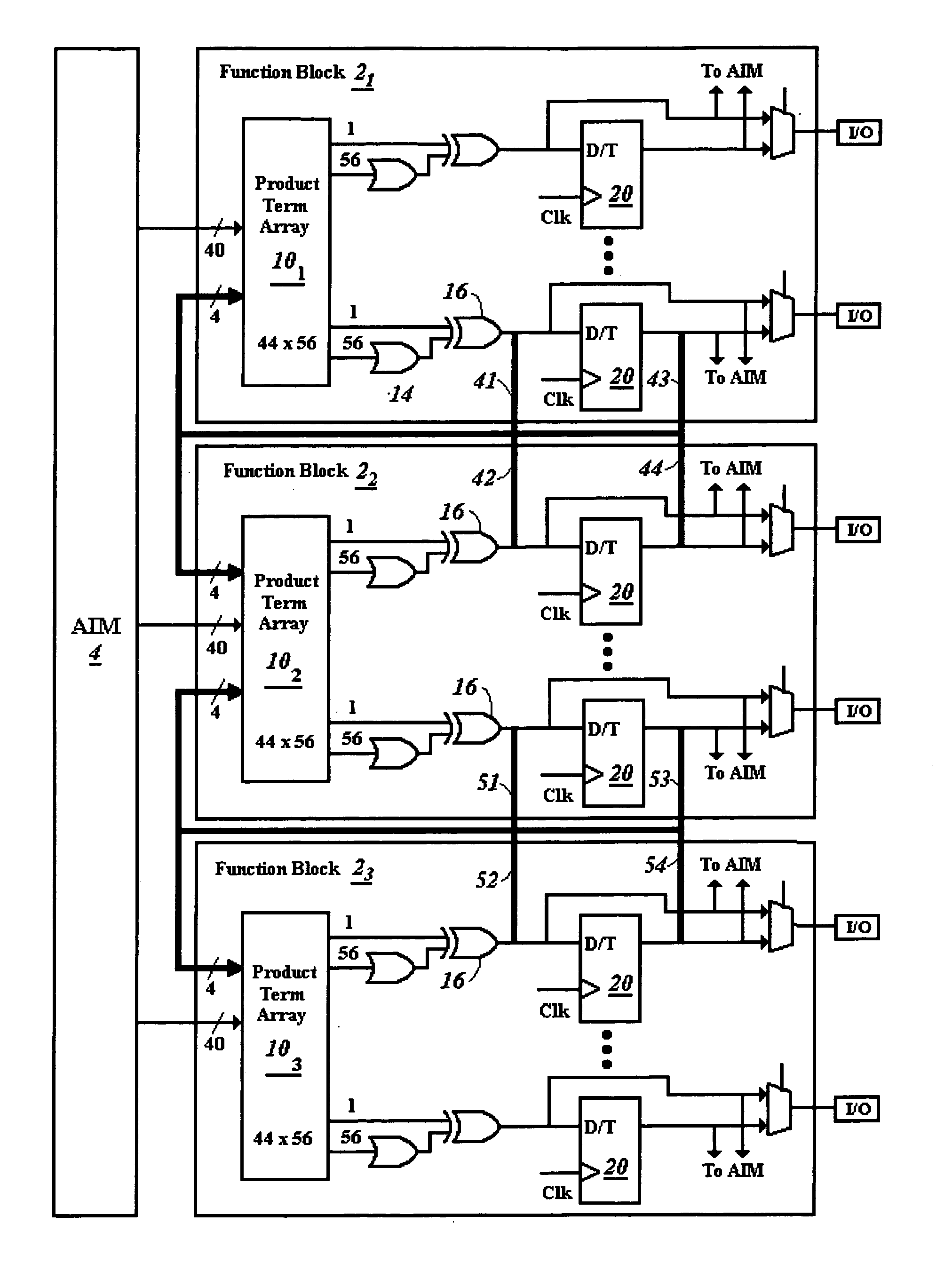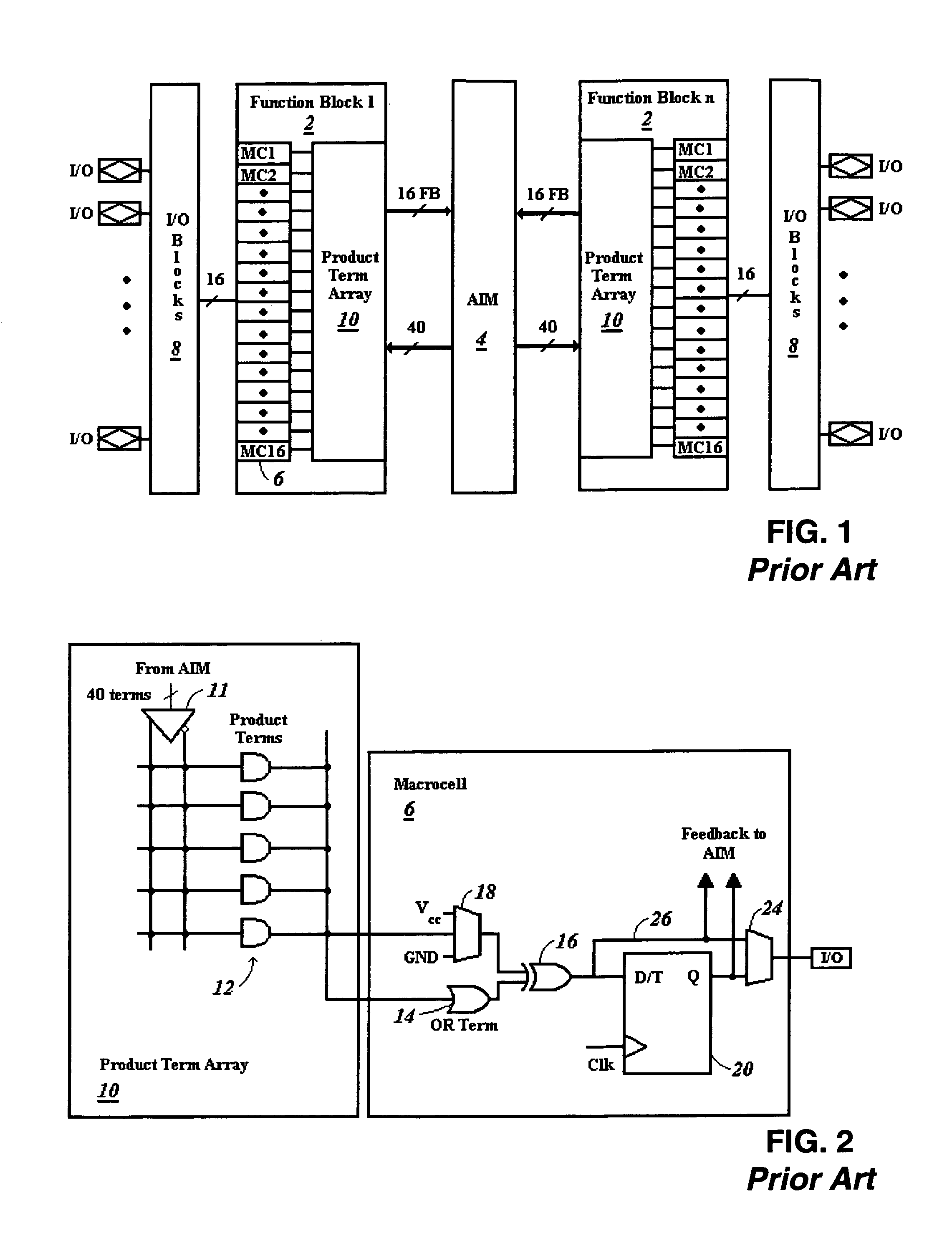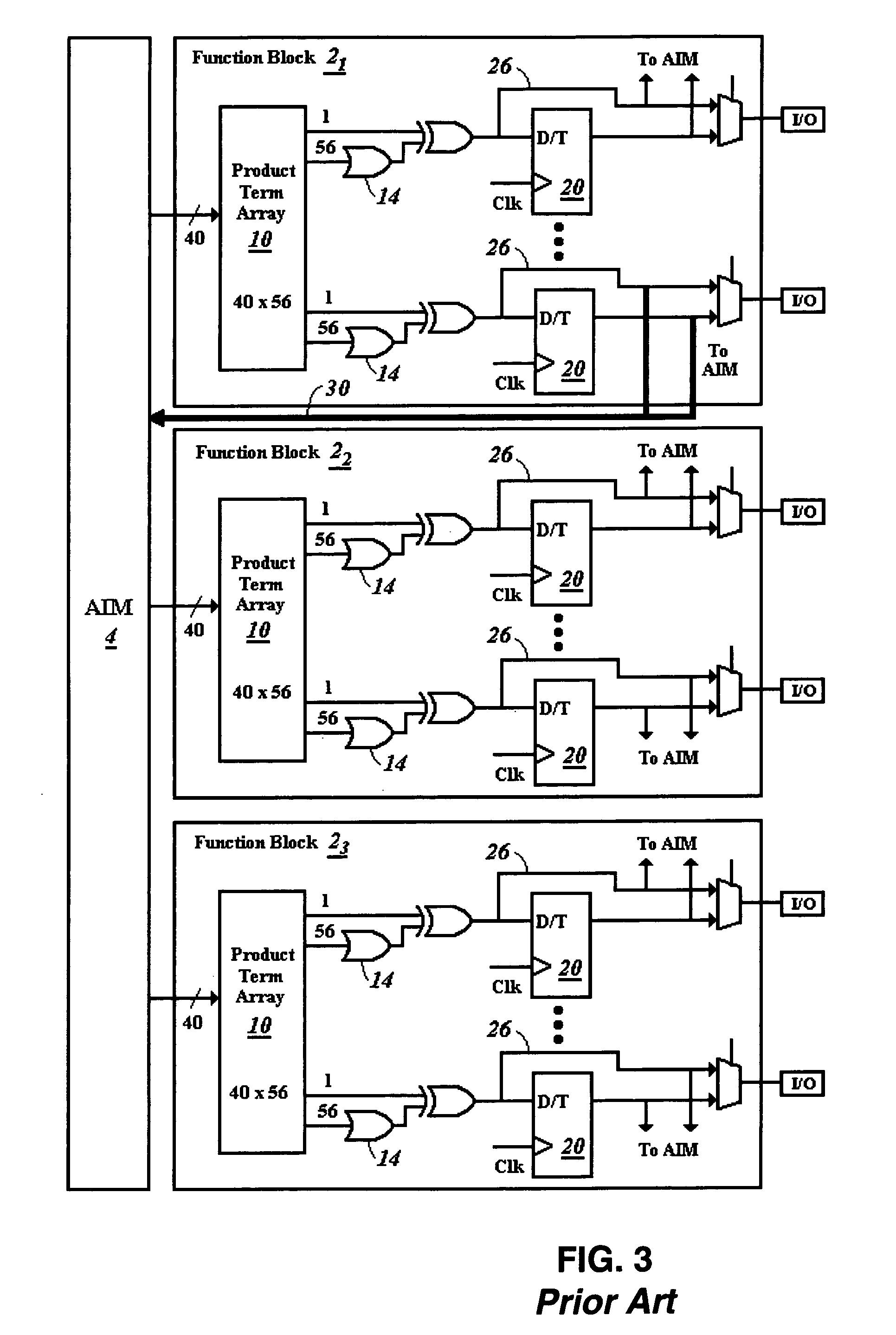CPLD with fast logic sharing between function blocks
a function block and logic technology, applied in the field of complex programmable logic devices, can solve the problems of logic buffering, logic incurring delay penalties, logic dividing etc., and achieve the effect of reducing delay penalties resulting from wide operations being divided between multiple logic levels, reducing the size of the operation, and improving resource allocation
- Summary
- Abstract
- Description
- Claims
- Application Information
AI Technical Summary
Benefits of technology
Problems solved by technology
Method used
Image
Examples
Embodiment Construction
[0027]FIG. 5 illustrates the fast logic feedback paths 41–44 and 51–54 among functional blocks 21-3 of a PLD provided in accordance with the present invention. The logic sharing is implemented by connecting shared generated logic directly to the input of the product term arrays in different function blocks 21-3 using connections 41–44 and 51–54. In particular, the fast logic feedback paths bypass the AIM 4.
[0028]The shared connection feedback points may be from a number of different logic resources within a function block. For example the feedback point may be from the output of the XOR gate, such as XOR outputs 41 and 42, within a macrocell, or the output of the register, such register outputs 43 and 44, within a macrocell. The feedback may further be provided from both the output of the XOR gate 16 and the register 20. Although feedback connections after the XOR gate 16 and register 20 are illustrated, other connection points may likewise be used, such as after the OR gate 14, and...
PUM
 Login to View More
Login to View More Abstract
Description
Claims
Application Information
 Login to View More
Login to View More - R&D
- Intellectual Property
- Life Sciences
- Materials
- Tech Scout
- Unparalleled Data Quality
- Higher Quality Content
- 60% Fewer Hallucinations
Browse by: Latest US Patents, China's latest patents, Technical Efficacy Thesaurus, Application Domain, Technology Topic, Popular Technical Reports.
© 2025 PatSnap. All rights reserved.Legal|Privacy policy|Modern Slavery Act Transparency Statement|Sitemap|About US| Contact US: help@patsnap.com



